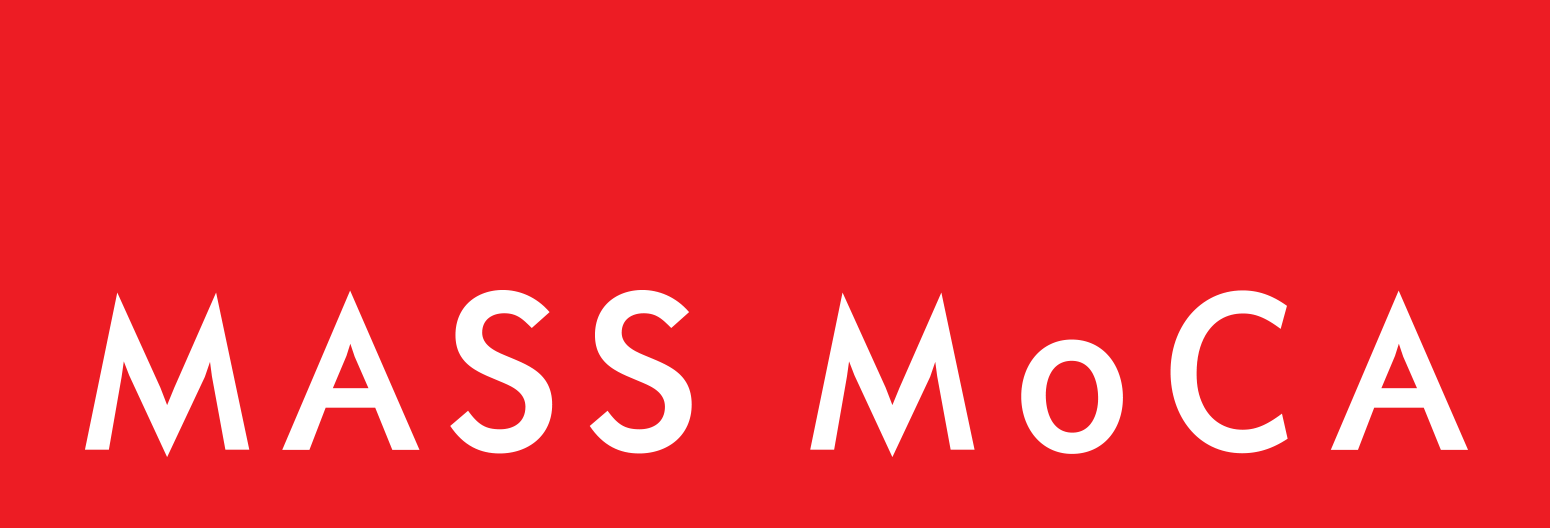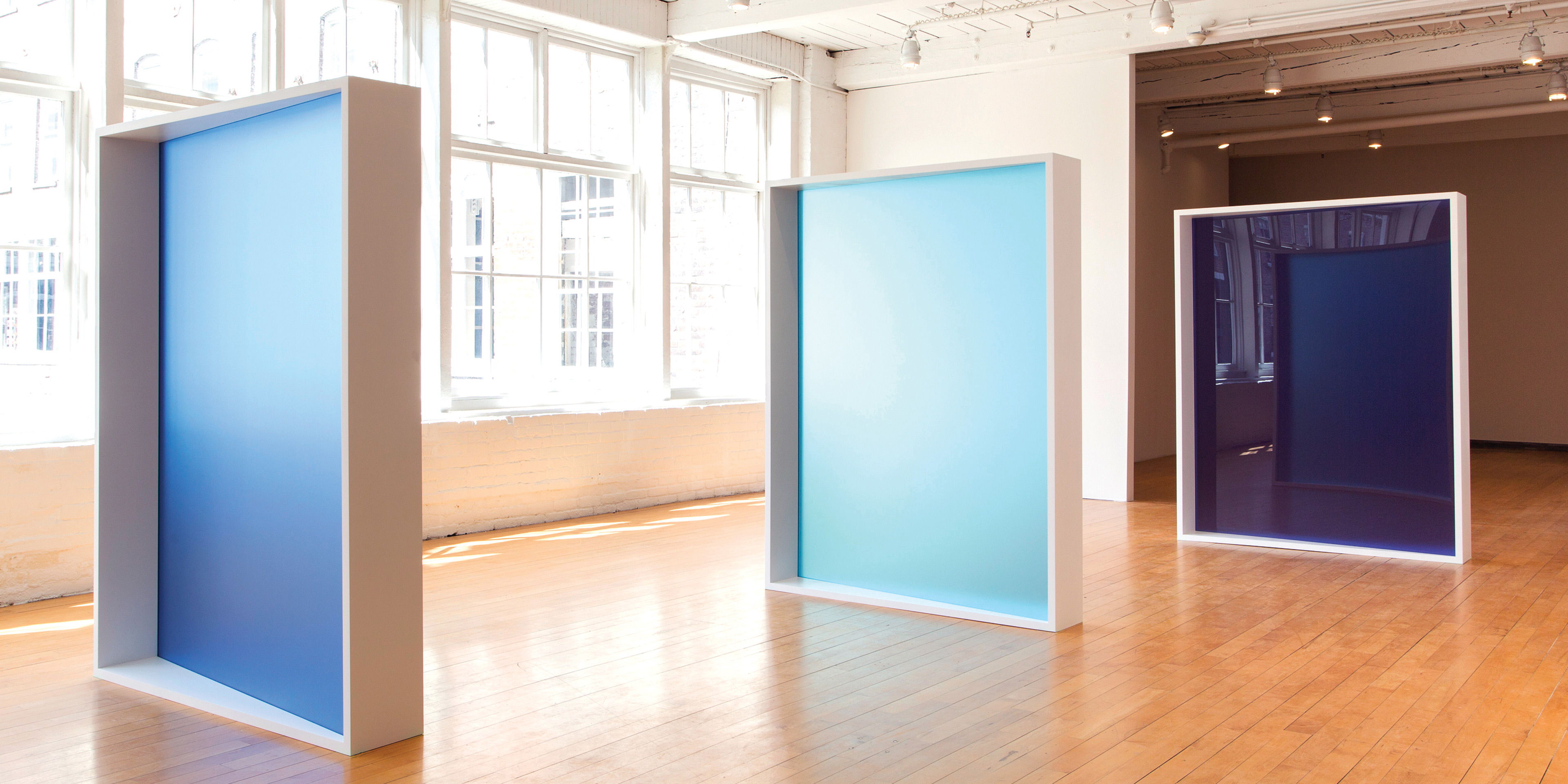 Exhibition
Exhibition- May 23, 2015 - April 17, 2016
- Galleries
Liz Deschenes takes the medium of photography itself as the subject of her work. Described as “self-reflexive” or “concrete photography,” Deschenes’ practice makes visible the materials, properties, and chemical processes of photography, rather than representing the external world. The complexity of her images is evident in the range of descriptions assigned them, which includes meditative, elegiac, playful, captivating, somber, surprising, and mind altering.
Her solo project at MASS MoCA featured new works made for the exhibition, which often engage their surroundings; “Camera literally means ‘room’ in Latin,” the artist has pointed out. Her works draw attention to the rooms they occupy by reflecting the environment in their mirror-like surfaces and in their shaped supports which are designed to mimic the shadows and light of their particular location. Occupying space in a sculptural fashion, Deschenes’ photographs have variously been draped on the floor, hinged at right angles to the wall, situated in the corners, and suspended from the ceiling. Both their careful placement and their non-referential images make close observers aware of not only the parameters of the medium but also of their own perceptual and physical experience in the gallery.
Deschenes is perhaps known best for her photograms that are produced without a camera. She creates these monochromatic surfaces by exposing silver-gelatin paper to moonlight and then arresting the image with a fixer. The variations in natural light, atmospheric conditions, and chemicals create marbleized, reflective surfaces that take on the look of metal and continue to oxidize and darken over time. Her engagement with the properties of light-sensitive paper harkens back to the nascent stages of photography when pioneers such as Louis Daguerre and William Henry Fox Talbot experimented with chemicals to produce the first photographic images in the 1830s. Like these early attempts, which faded over time as the unstable chemicals deteriorated, Deschenes’ photographs are in a constant state of flux, suggesting—if not recording—the passage of time. Her exploration of non-representational forms and experimental processes also connects Deschenes’ practice to avant-garde practicioners of the early 20th century, such as Man Ray, Berenice Abbott, and others who tested the limits and possibilities of the photographic medium. Deschenes’ art is perhaps best described in her own words: “I am interested in photography cultivating a self-reflexive dialogue, while simultaneously reflecting the world at large, utilizing a vocabulary that integrates concept with form.”
Born in Boston in 1966, Deschenes earned her BFA from the Rhode Island School of Design in 1988. Since the 1990s, she has been exhibited widely across Europe and North America. She had a solo exhibition at the Secession, Vienna (2012), and her work is currently featured in a one-person show at the Walker Art Center. The artist’s work has also been featured in numerous group exhibitions, most notably at the International Center for Photography, New York (2014); Museum of Modern Art, New York (2013); and Art Institute of Chicago (2012); and in the 2012 Whitney Biennial. Deschenes is represented in the public collections of the Museum of Modern Art, New York; Metropolitan Museum of Art, New York; Whitney Museum of American Art, New York; CCS Bard Hessel Museum of Art, Annandale-on-Hudson, New York; Walker Art Center, Minneapolis; Art Institute of Chicago; Hirshhorn Museum and Sculpture Garden, Washington D.C.; San Francisco Museum of Modern Art; and Centre Pompidou, Paris. Recently awarded the DeCordova’s 2014 Rappaport Prize, Deschenes is also a professor in the Visual Arts department at Bennington College. She lives and works in New York.
This exhibition is supported by a grant from the Artist’s Resource Trust with additional funding provided by the Horace W. Goldsmith Foundation and the Massachusetts Cultural Council.
Liz Deschenes, Gallery 4.1.1, MASS MoCA (installation view)
Pigment prints on acrylic, 5 framed elements, 74½ × 57½ × 10 inches each
Courtesy the artist, Miguel Abreu Gallery, New York, and Campoli Presti, London/Paris
photo: David Dashiell



